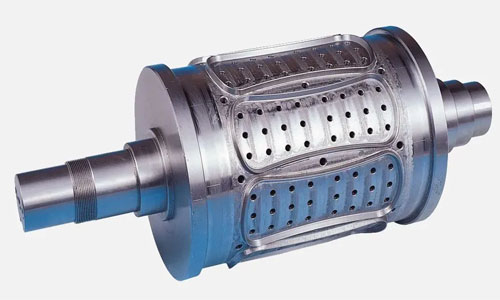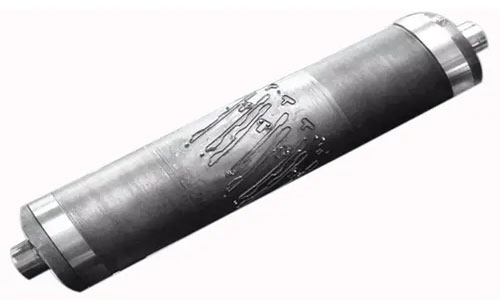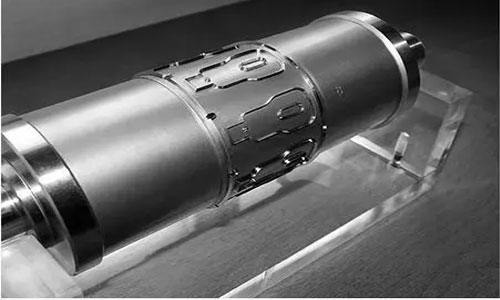
A rotary cutting die, also known as a circular cutting die, is a tool used in various industries for precise cutting and shaping of materials. It consists of a circular or round-shaped blade, typically made from hardened steel, mounted on a rotary device.
The round cutting die is commonly used in manufacturing processes such as paper, cardboard, fabric, leather, and plastic industries. It is utilized to cut shapes, patterns, or designs with precision and efficiency. The tool is designed to work in conjunction with a rotary press, which ensures consistent and accurate cutting results.
One of the key advantages of using a rotary cutting die is its ability to produce high-quality and intricate cuts effortlessly. The circular blade smoothly rolls over the material, exerting even pressure, resulting in clean and precise cuts. The circular shape of the blade allows for curved cuts, making it ideal for creating rounded or circular shapes in various materials.
Moreover, the circular cutting die offers versatility in terms of design customization. The blades can be customized and machined to create different sizes, patterns, and contours according to specific requirements. This flexibility makes it suitable for a wide range of applications, from simple designs to complex shapes and even perforations.
In conclusion, the rotary cutting die, also referred to as a circular cutting die, is an invaluable tool in industries that require precision cutting and shaping of materials. Its round-shaped blade and compatibility with rotary presses enable efficient and accurate production of various shapes and designs.
The circular pressing knife mold is a mold made from blades installed on a circular arc wooden board. The manufacturing process is complex, and the following points should be noted:
(1) For the circular pressing knife mold used for die-cutting cigarette packs, the processing precision should be within ±0.07mm in terms of product die-cutting error. As for the magnetic circular pressing mold cutting knife, since it usually uses several cutting knives to sequentially die-cut different parts of the product on a line, the processing precision should be within ±0.03mm in terms of product die-cutting error.
(2) After the circular pressing knife mold is processed and formed, the blade width is 0.02-0.05mm, and the height is 1.0-1.5mm. To control the deformation during processing, it is generally required to use superhard processing methods. This poses higher requirements on the comprehensive processing ability of technicians, such as their understanding of the characteristics of circular pressing mold cutting knives and processing equipment, as well as the control of the hardness, toughness, and material deformation of the tools during later heat treatment.
The improvement of this comprehensive processing ability is the main factor determining the final quality of circular pressing knife molds.
(3) Since the die-cutting patterns of cigarette packs are constantly changing, each circular pressing knife mold is a brand new product. This puts high demands on the design capability, process adaptability, and personal qualities of the circular pressing mold cutting knife manufacturing company.

Precautions for Use
The widespread use of circular pressing knife molds has not only improved the production efficiency of products but also brought considerable economic benefits to printing companies. However, its special performance still leads to some problems during use, which require operators to pay constant attention.
1. Paper selection
Due to the increasing requirements of businesses for high-end product packaging, packaging not only needs to meet the functional requirements of product protection but also must have a certain artistic quality. Therefore, the types of paper used for packaging are becoming more and more complex, including white cardboard, laminated gold (silver) cardboard, and aluminum foil (transfer) paper as the main types. These papers can be divided into two categories: recycled paper and virgin paper.
2. Sponge rubber strip selection
When die-cutting with a circular pressing knife mold, the selection of sponge rubber strips is equally important. Choosing a good sponge rubber strip and positioning it correctly can effectively hold and convey the paper while preventing recycled paper from producing fluff and dust. When installing the sponge rubber strip, keep a distance of 0.5-1.0mm from the blade of the circular pressing mold cutting knife. The commonly used width of the sponge rubber strip is 20-25mm, thickness is 2.0-3.5mm, each strip is 1m long, with a Shore hardness of 25-50 HS. It needs to be resistant to deformation when pulled by hand and has the characteristics of automatic rebound and bending back to its original shape.
3. Other precautions
In addition to paper and sponge rubber strip selection, when using a circular pressing knife mold, it is necessary to avoid the occurrence of indentation and bursting lines, which can be caused by the following main reasons:
① Excessive die-cutting pressure when using the circular pressing knife mold for the first time;
② When die-cutting hard box cigarette packs, the spacing between the indentation lines is small, and the die-cutting pressure is excessive at the same time;
③ Dull blade edge of the circular pressing knife mold or excessively thick paper, which causes blade clamping or adhesive knife failure.

Storage precautions
Before storing the circular pressing knife mold, clean its surface, apply machine yellow compound oil to isolate it from the air, and then choose a cool and dry place. Cover it with bubble plastic film to prevent dust. It is best to place it in a wooden packaging box.
Contact: Pamela
Phone: +86 189 6365 3253
E-mail: info@industryprocess.com
Whatsapp:+86 189 6365 3253
Add: Yajing Industrial Park, No. 59 Shuangjing Street, Weiting Town, Suzhou Industrial Park
We chat
